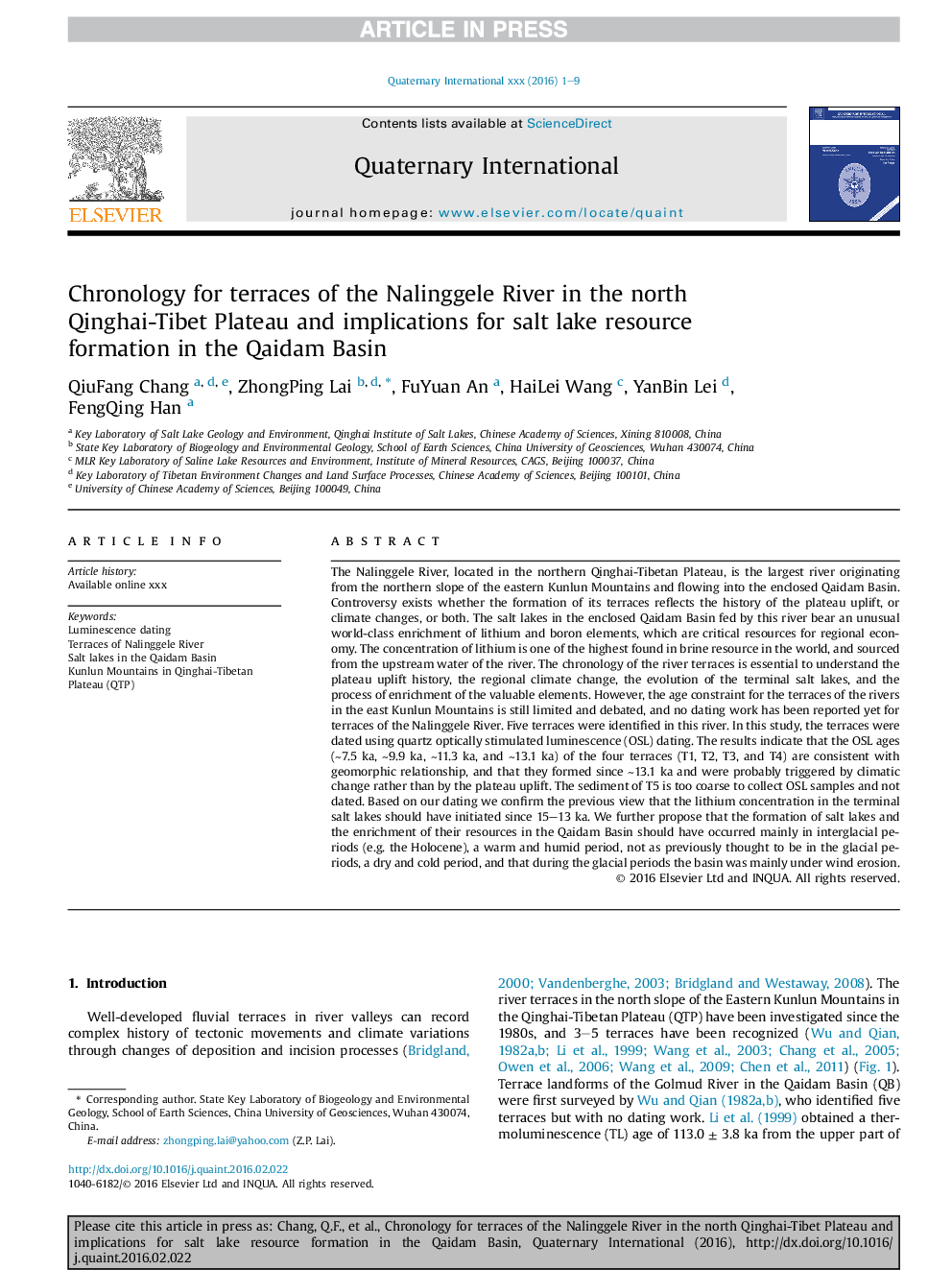| کد مقاله | کد نشریه | سال انتشار | مقاله انگلیسی | نسخه تمام متن |
|---|---|---|---|---|
| 5113867 | 1484080 | 2017 | 9 صفحه PDF | دانلود رایگان |
عنوان انگلیسی مقاله ISI
Chronology for terraces of the Nalinggele River in the north Qinghai-Tibet Plateau and implications for salt lake resource formation in the Qaidam Basin
ترجمه فارسی عنوان
دوره زمانی برای تراسهای رودخانه نالینگگه در شمال باستان چینگهای-تبت و پیامدهای آن برای تشکیل منابع دریاچه نمک در حوضه قیدم
دانلود مقاله + سفارش ترجمه
دانلود مقاله ISI انگلیسی
رایگان برای ایرانیان
کلمات کلیدی
موضوعات مرتبط
مهندسی و علوم پایه
علوم زمین و سیارات
زمین شناسی
چکیده انگلیسی
The Nalinggele River, located in the northern Qinghai-Tibetan Plateau, is the largest river originating from the northern slope of the eastern Kunlun Mountains and flowing into the enclosed Qaidam Basin. Controversy exists whether the formation of its terraces reflects the history of the plateau uplift, or climate changes, or both. The salt lakes in the enclosed Qaidam Basin fed by this river bear an unusual world-class enrichment of lithium and boron elements, which are critical resources for regional economy. The concentration of lithium is one of the highest found in brine resource in the world, and sourced from the upstream water of the river. The chronology of the river terraces is essential to understand the plateau uplift history, the regional climate change, the evolution of the terminal salt lakes, and the process of enrichment of the valuable elements. However, the age constraint for the terraces of the rivers in the east Kunlun Mountains is still limited and debated, and no dating work has been reported yet for terraces of the Nalinggele River. Five terraces were identified in this river. In this study, the terraces were dated using quartz optically stimulated luminescence (OSL) dating. The results indicate that the OSL ages (â¼7.5Â ka, â¼9.9Â ka, â¼11.3Â ka, and â¼13.1Â ka) of the four terraces (T1, T2, T3, and T4) are consistent with geomorphic relationship, and that they formed since â¼13.1Â ka and were probably triggered by climatic change rather than by the plateau uplift. The sediment of T5 is too coarse to collect OSL samples and not dated. Based on our dating we confirm the previous view that the lithium concentration in the terminal salt lakes should have initiated since 15-13Â ka. We further propose that the formation of salt lakes and the enrichment of their resources in the Qaidam Basin should have occurred mainly in interglacial periods (e.g. the Holocene), a warm and humid period, not as previously thought to be in the glacial periods, a dry and cold period, and that during the glacial periods the basin was mainly under wind erosion.
ناشر
Database: Elsevier - ScienceDirect (ساینس دایرکت)
Journal: Quaternary International - Volume 430, Part B, 12 February 2017, Pages 12-20
Journal: Quaternary International - Volume 430, Part B, 12 February 2017, Pages 12-20
نویسندگان
QiuFang Chang, ZhongPing Lai, FuYuan An, HaiLei Wang, YanBin Lei, FengQing Han,
